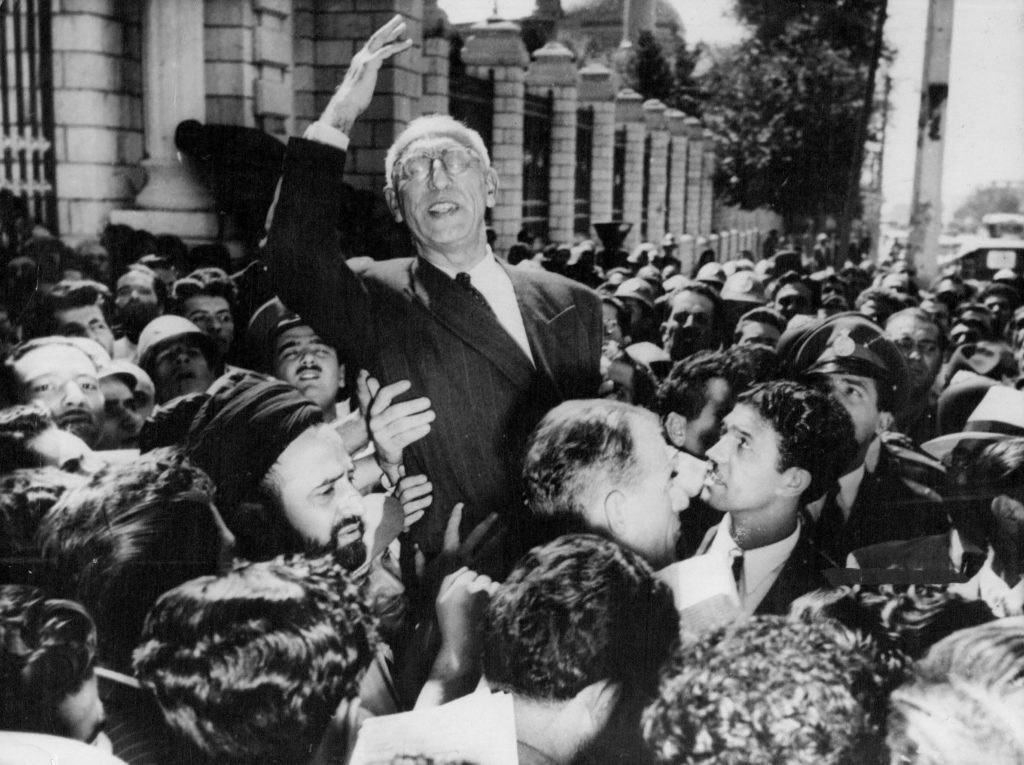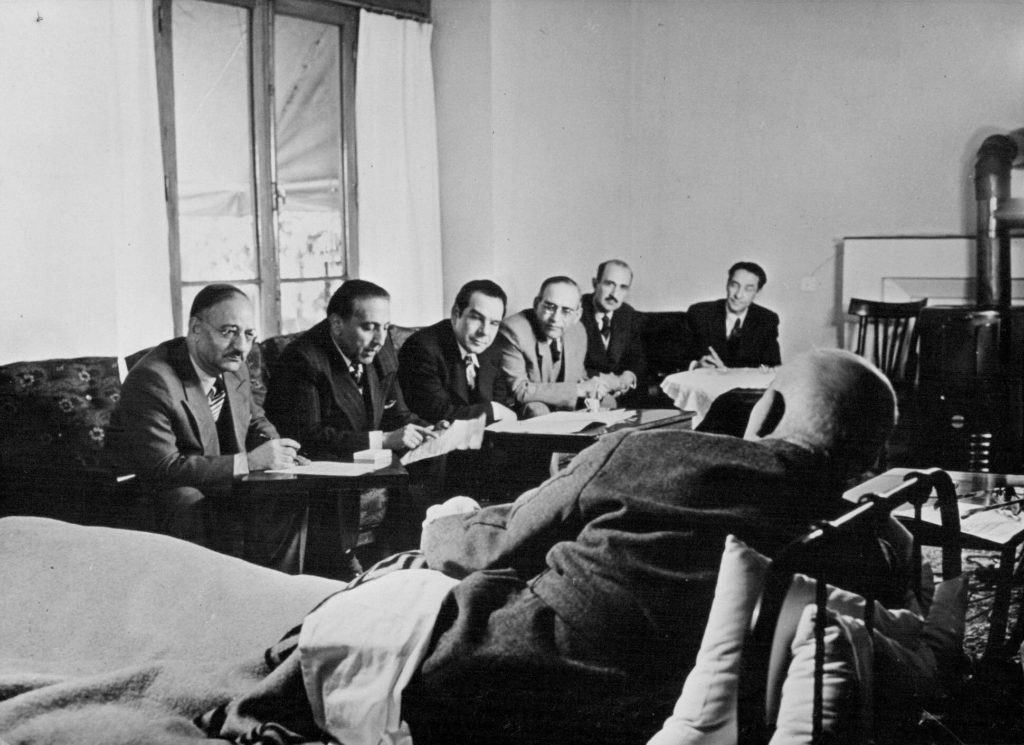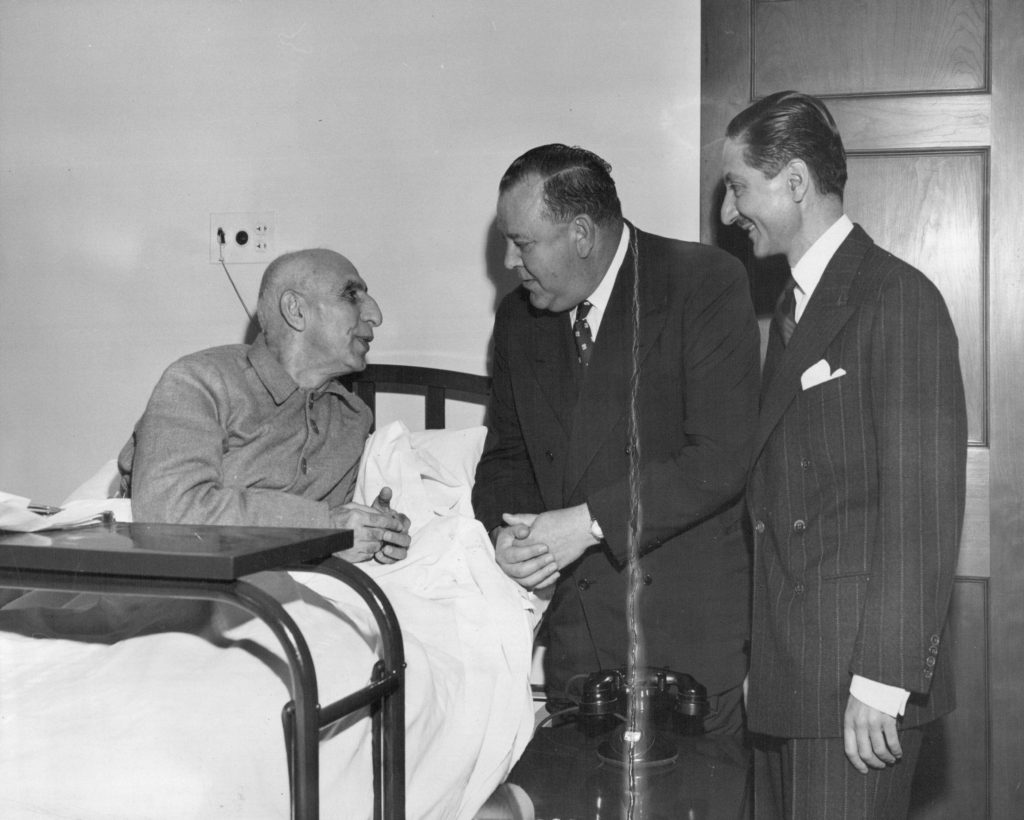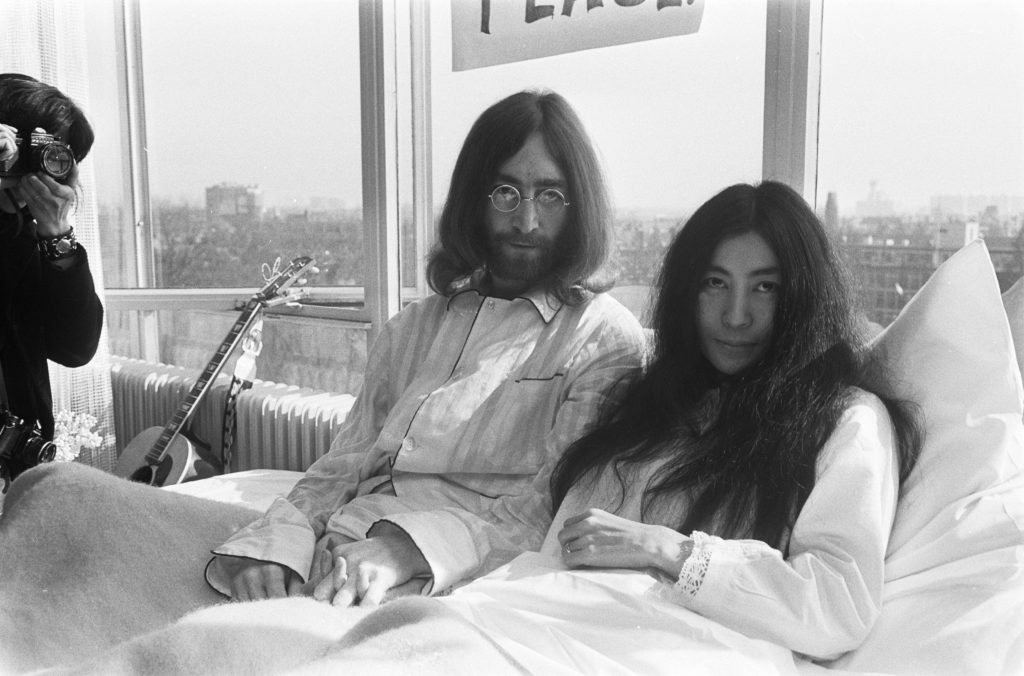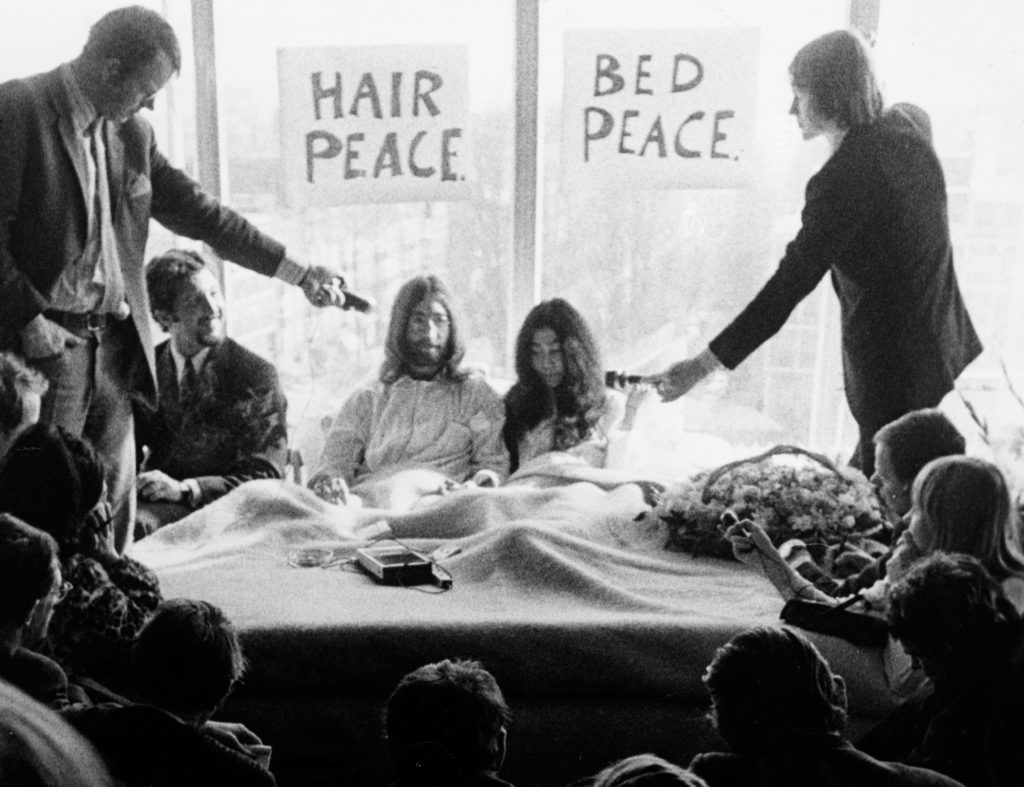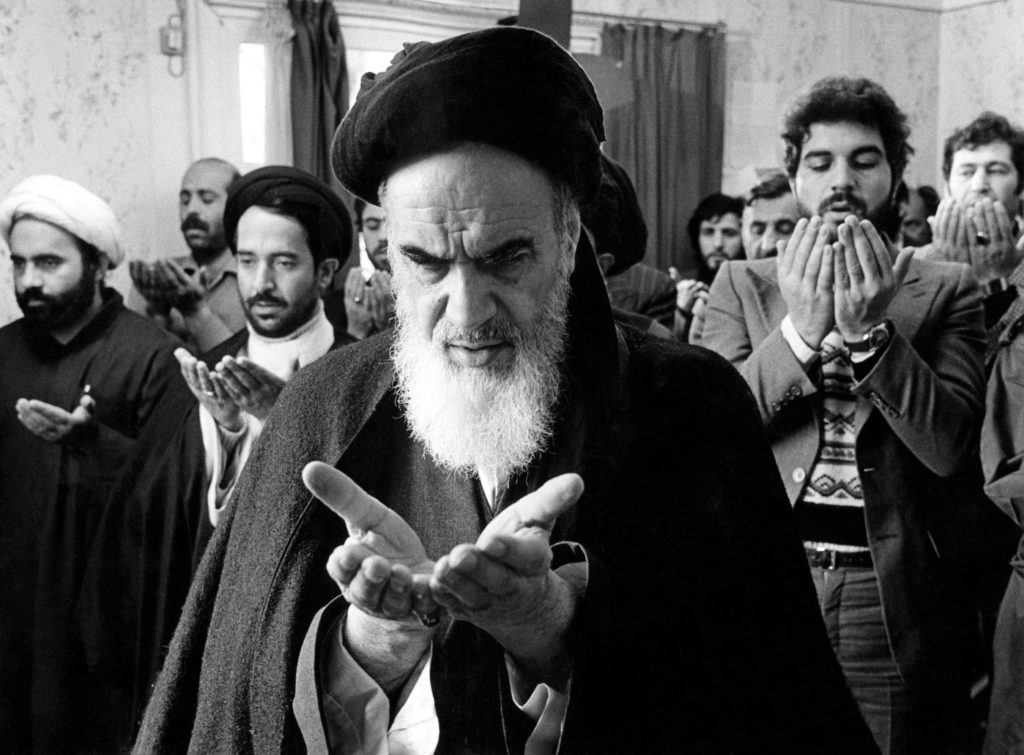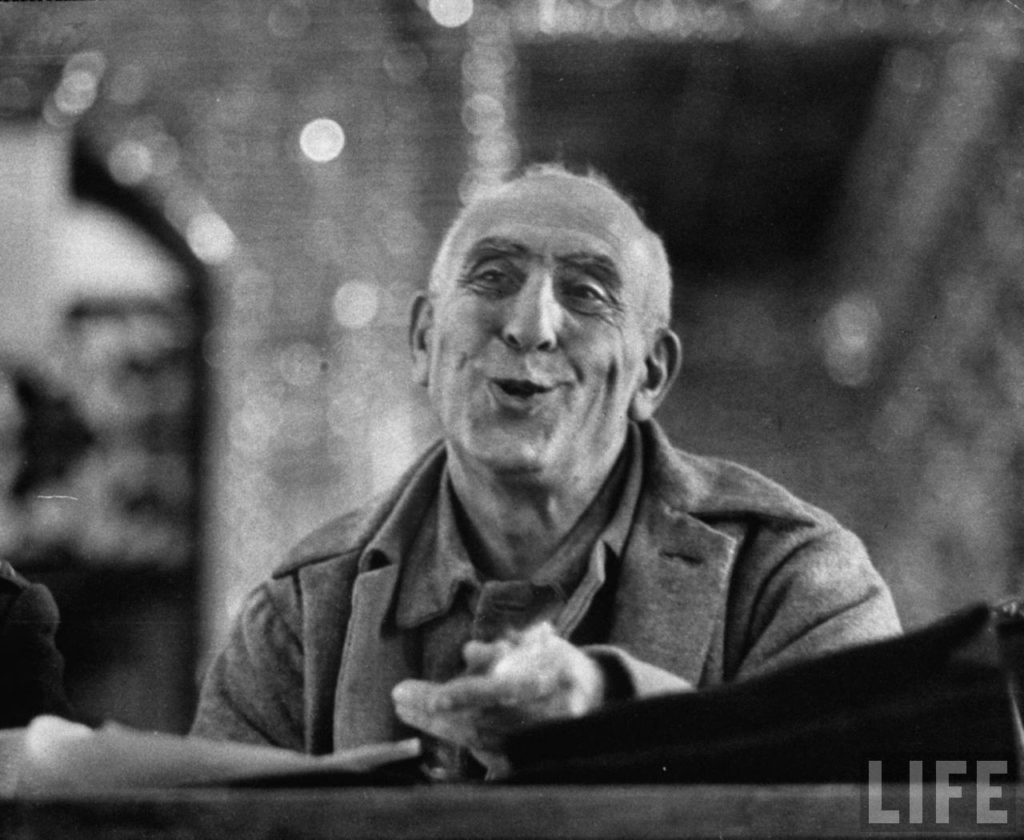The coup against Mohammad Mosaddegh
Hey history teachers: do you ever tell your students about Mohammad Mosaddeq?
At least mine didn’t. In fact, I’m a little shocked that I hadn’t even heard his name until @aram_jajar (follow her!) told his story.
Mosaddeq was the highly popular, democratically elected prime minister of Iran in 1951–1953. TIME named him Man of the Year in 1951.
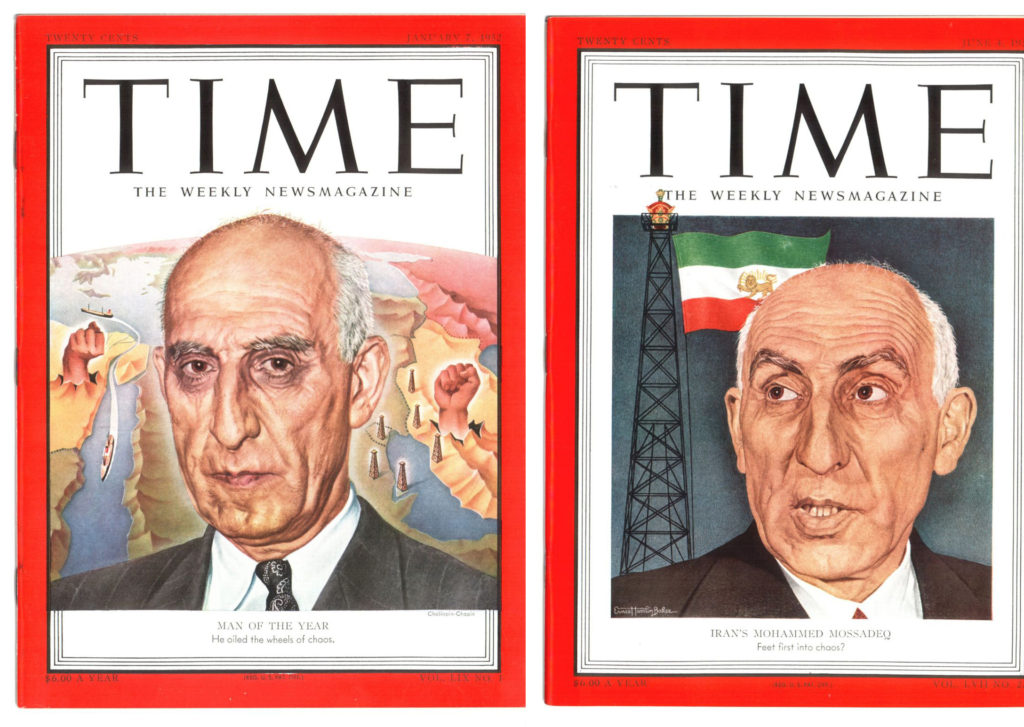
Mosaddeq was featured on the cover of TIME in both 1951 and 1951. Illustrations: Ernest Hamlin Baker and Boris Chaliapin
He was known for being so passionate during his speeches that he either burst into tears or fainted (!). He also caused media sensations by making a habit of conducting governmental meetings and receiving state visits in the comfort of his own bedroom, since he preferred to rule the country from his bed.
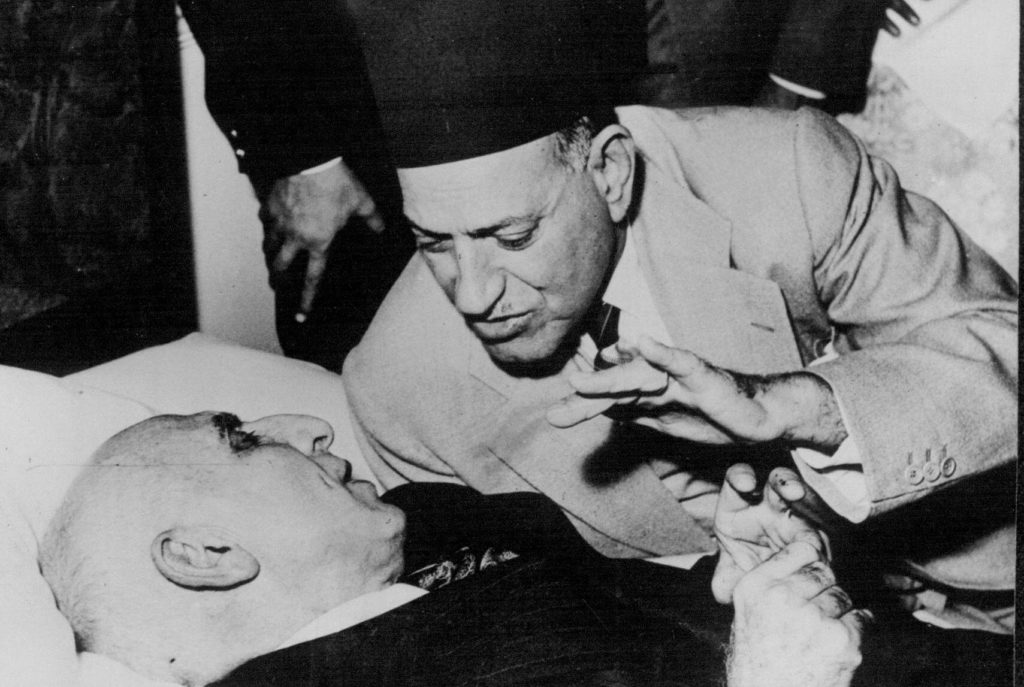
Mosaddeq meeting Egyptian prime minister Mostafa El-Nahas. Photo: Sport & General Press Agency, Limited
“Is he sick?”, worried supporters asked themselves.
“It’s a PR stunt!”, critics scoffed.
“He’s a PR genius!”, John Lennon and Yoko Ono wrote in their notebooks.
The biggest contributing factor to his worldwide fame, and hero status in Iran itself, was the fact that he nationalized the country’s oil. All the way back since 1913, the Anglo-Iranian Oil Company (which would later become British Petroleum) had drilled for oil on behalf of the British Empire, and paid Iran next to nothing in return. Mosaddeq demanded more. When the representatives of the Empire refused, he kicked them out of the country.
Mosaddeq had intended to use the oil profits to increase welfare and decrease poverty. But the Brits put a stop to that by calling for an international boycott of Iranian oil. They also convinced the US — which was worried that Iran would cozy up to the Soviets — to lend a hand.
In 1953, CIA and MI6 coordinated a coup, known as Operation Ajax, which resulted in Mosaddeq being deposed, and the dictator-monarch Reza Pahlavi reinstated.
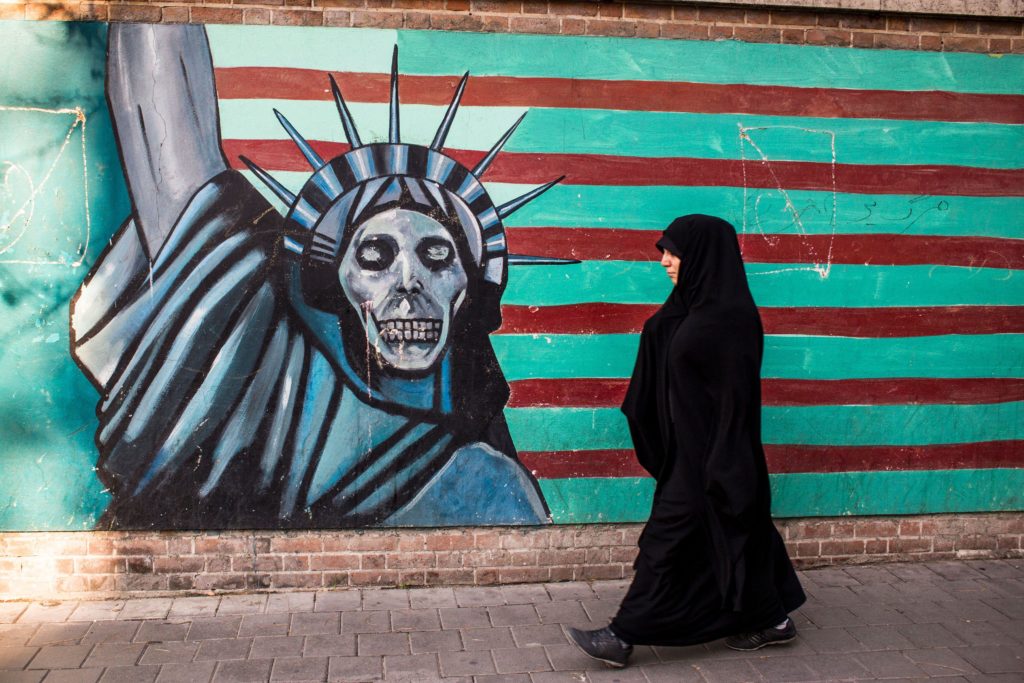
A woman in front of anti-American graffiti on the wall of the previous US embassy. Photo: Dani Salvá, VWPics/Alamy
The great irony is that the Islamic Republic today condemns the Iranian people’s struggle to turn the country into a secular democracy as “Western imperialism”.
Because it wasn’t democracy that the US and Britain forced on the Iranian people in 1953 — but dictatorship.
Never forget: as early as the 1950s, the Iranian people yearned for freedom. If you don’t believe me, just open a history book. Oh, wait — that was my question to begin with: is any of this even mentioned?
Sources
@aram_jajar’s summary about the coup against Mosaddeq, and how US sanctions against Iran have historically impacted the Iranian people in particular.
Encyclopedia Britannica’s Mohammad Mosaddegh biography. After being deposed in 1953, Mosaddeq was kept in house arrest for the rest of his life. After his death in 1967, his funeral was conducted in his living room, in order not to stoke civil unrest.
PS. Gå tillbaka och notera rubrikerna som TIME satte om Mosaddeq: ”Iran’s Mohammed Mosaddeq: Feet first into chaos?” och ”Man of the Year: He oiled the wheels of chaos.” Vem skapade egentligen kaos i Iran?
Back to all posts about Iran

